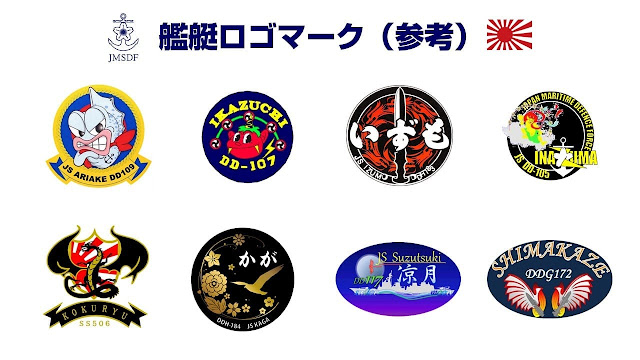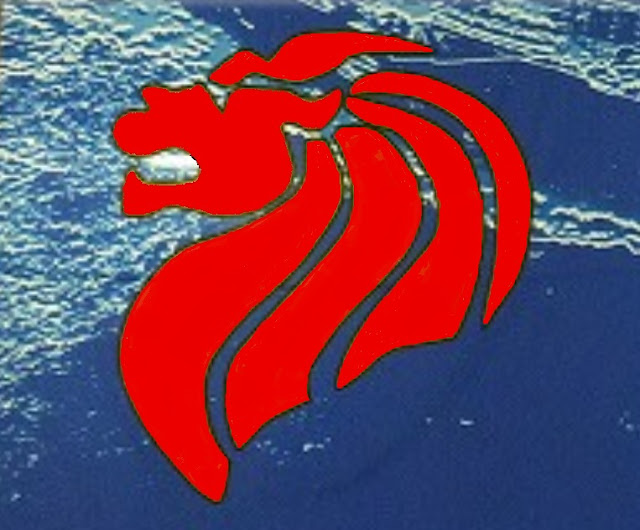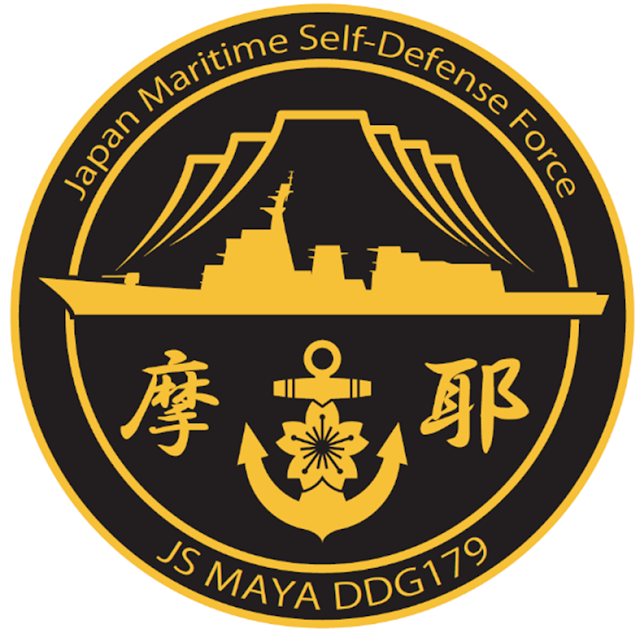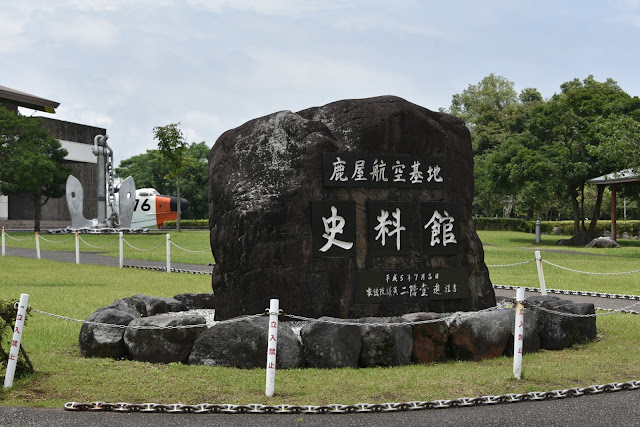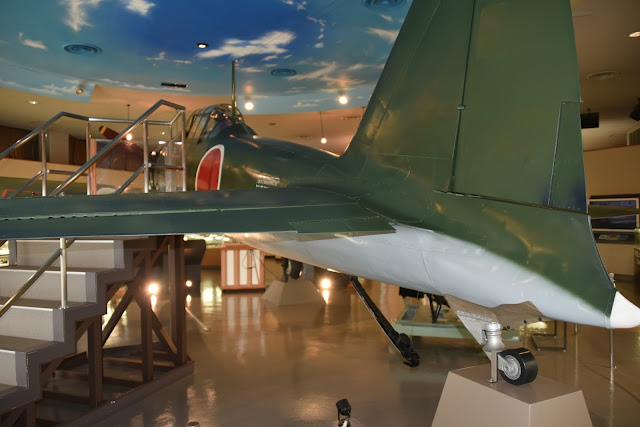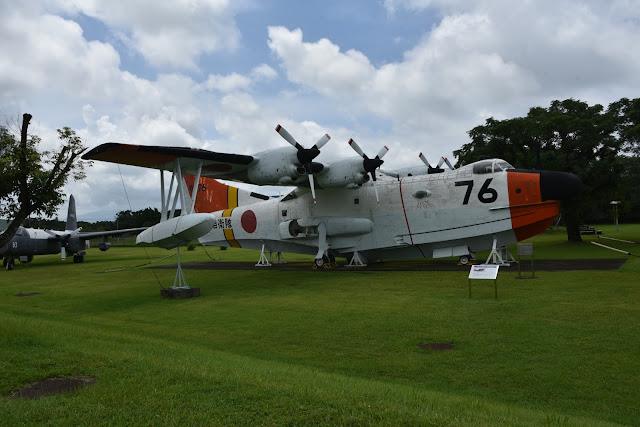 |
| F-35B of the Marine Fighter Attack Training Squadron 501 Photo : Lockheed Martin |
On 9th Jan 2020, the Defense Security Cooperation Agency ( DSCA ) announced that the US Department of State had just approved a potential Foreign Military Sale ( FMS ) to Singapore of up to 12 F-35B Short Take-Off And Vertical Landing ( STOVL ) aircraft and related equipment for an estimated cost of USD 2.75 billion.
Singapore's interest in the F-35 Joint Strike Fighter ( JSF ) program had began in Mar 2004 when it became a security cooperative participant. For a very long time the Singapore government seemed contented to just monitor the progress of the JSF program as it matured. There were numerous instances when defense analysts and news agencies had indicated that Singapore might be ready to acquire the F-35 but the JSF deal had remained elusive. It even failed to materialize during Prime Minister Lee Hsien Loong's visit to the White House in 2016, at the invitation of President Obama.
All that changed in Jan 2019 when Minister for Defense Ng Eng Hen announced that Singapore had identified the F-35 as a suitable candidate to replace its ageing F-16 fighters and would be acquiring a small number of the stealthy 5th generation fighter for a full evaluation of its capabilities and suitability before deciding on a full fleet.
By Mar 2019 it was revealed that Singapore would be requesting for an initial four F-35 JSF with an option for eight more, variant unspecified. Months of media speculation followed, but we now know that Singapore has selected the F-35B, the STOVL version which is the most expensive among the three F-35 variants.
The F-35 In A Nutshell
At a cost of more than USD 400 billion, the F-35 Joint Strike Fighter program is the most expensive weapons program the world has seen. Its aim is to produce an affordable fifth generation multi-role stealth fighter to replace various legacy fighters of the US and its closest allies. The F-35 comes in three variants, all having similar performance characteristics and share commonality in parts and processes in order to capitalize on the economies of scale to reduce procurement and sustainment costs. The variants cater to the differing service-specific requirements by the Air Force, Navy and Marines. To put it simply, the F-35A is the conventional take-off and landing ( CTOL ) version for the Air Force, the F-35B is the STOVL version for the Marines while the F-35C is the carrier variant ( CV ) for the Navy.
The JSF program is plagued with multiple issues from technical deficiencies, delays to cost overruns and the root of its many problems can be traced to its developmental concept of " concurrency ". The idea that in an era where new technology is emerging at an unprecedented rate, an aircraft design will be obsolete the moment its development has concluded. In order to field aircrafts with the latest technologies earlier, they will be produced before tests and trials are completed and eventually upgraded along the way to the latest standards.
Despite its troubled past, the JSF program has matured over the years and has seemed to turn around to deliver what was originally promised - affordable stealth. Unit prices have continuously fallen in the past several years due in part to an increase in production efficiency and to the economy of scale from an increase in aircraft orders.
New Capabilities for the RSAF
Acquiring the F-35B will bring two completely new capabilities to the Republic of Singapore Air Force ( RSAF ) - STOVL and Stealth. Between the two, I would believe STOVL is the most unique since there is not another country in the Asia Pacific region save Japan that has confirmed plans for such a capability.
Stealth technology can become an increasing crucial capability to have as Singapore's regional near-peer rivals begin to acquire sophisticated aircrafts like the Su-30 and Su-35 which can out-class even the RSAF's most advance fighter like the F-15SG. It can ensure higher survivability of the aircraft and pilot in an extremely hostile threat environment.
STOVL is equally important to ensure sustained generation of air operations in the event of disruptive attacks to Singapore's airbases. Aircrafts with short field capabilities can be dispersed and hidden more effectively on the ground and can have alternative means of take-off and landing even when the conventional runway is made unavailable by a pre-emptive strike.
In addition, having STOVL capable jets means that should the Singapore Navy decide to replace its Endurance-class landing ship tank with something bigger like the Endurance-160 Joint Multi-Mission Ship, these helicopter assault ships can be potentially modified for F-35B operations as well, converting them into light aircraft carriers. The JMMS then becomes mobile airfields at sea, projecting airpower and will be an added insurance against complete annihilation through a coordinated attack on Singapore's land based runway infrastructure.
 |
| F-35B of the Patuxent River Integrated Test Force attempts vertical landing on the Queen Elizabeth II 3rd Nov 2018. Photo : USN |
STOVL : Unique Capability At A Price
The F-35B is not just the only modern STOVL jet fighter that is currently in production, it is also capable of supersonic flight. Its predecessor the AV-8B Harrier II which is also STOVL capable is at best only sub-sonic. This short field and austere field capability is the unique selling point of the F-35B but it comes at a price.
The requirement for STOVL capability in the F-35B meant that its design is the most complex among the three F-35 variants. It needed a proprietary shaft driven LiftFan propulsion system and an engine nozzle that can swivel 90 degrees when in STOVL mode. This in turns imposes limits on the size of the internal weapon bay and the internal fuel capacity which translates to a reduction in the weapons payload and combat radius. It even imposes structural limits and the F-35B has the lowest maximum g-rating among all the variants. Understandably the unit cost of the F-35B is also consistently the highest compared to the other variants.
So in view of the various technical setbacks peculiar to the F-35B, is the STOVL a capability worth having? The answer has to be an absolute yes if you intend to have fixed-wing flight operations on non-catapult equipped aircraft carriers like the navies of the United kingdom, Italy and Japan. It will also be a resounding yes for a small nation like Singapore which lacks strategic depth and has air bases that can be vulnerable to a determined attack by rocket, artillery and mortar fire from across its boarders.
Looking at the broader picture, the non-STOVL variants, the F-35A and the F-35C, also suffered similar functional and structural setbacks albeit to a lesser degree simply because of the requirement that all three variants had to have shared design and components with various degrees of commonality. In other words, the Marine Corps' insistent that STOVL capability must be included in their variant essentially resulted in the Air Force and the Navy having to accept compromises on their variants too. Compared with its 4th generation peers that it is meant to replace, the F-35 is frequently found to be a little lacking in maximum speed, agility, range and payload. The saving grace is that the F-35 more than makes up for all these shortfalls through its superior suite of sensors, avionics, sensor fusion and low observable technology, all of which shall be briefly reviewed below.
 |
| F-35 specifications. Source : LMC |
Very Low Observable
The F-35 is a fifth generation fighter which, according to its main contractor Lockheed Martin, is defined by the combination of Very Low Observable ( VLO ) stealth, advanced sensors, information fusion and network connectivity within a supersonic, long range and highly maneuverable aircraft.
VLO stealth technology is an integral part of the F-35's design. The clever use of shapes to deflect radar waves, the careful selection of materials that can dissipate radar energy and the internal carriage of weapons, fuel and embedded sensors means that it is much harder for the enemy to detect the F-35. The radar cross section ( RCS ) of the F-35 is the smallest when it is viewed head-on but less so when viewed from the side and even worse when viewed from the rear so it is hardly all-aspect stealth. It is also mainly stealthy in the X-Band, the most common frequency used by fire control radars and less so in other lower frequencies.
As much as it is hyped, stealth is not equivalent to invisibility to radar but rather a significant reduction in the detectability. Any advantage a stealth aircraft has can be undermined by several means including the use of infra-red search and tract technology to detect the heat signature of a stealthy aircraft and through the use of radar operating in frequencies other than the X Band, like L-Band or VHF.
While the level of stealth afforded by the F-35 is not at the same level as that of the F-22 Raptor, it is less costly to maintain as there is less dependency on expensive radar absorbing coating and that is definitely a good thing.
Distributed Aperture System
The electro-optical Distributed Aperture System ( DAS ) is a new generation of sensor system currently only found on the F-35 consisting of six identical high resolution mid-wave infrared ( MWIR ) sensors mounted all around the airframe in such a way as to provide an unobstructed 360 degree coverage for enhanced situational awareness. The DAS sends high resolution augmented reality imagery in real time to the pilot's helmet mounted display allowing them to see their surrounding environment with clarity day or night. It can provide functions including missile detection and tracking, launch point detection and countermeasures cueing, aircraft detection and tracking ( situation awareness IRST and air-to-air weapons cueing ), day and night navigation, and precision tracking of friendly aircraft for tactical maneuvering. Designated the AN/AAQ-37, the DAS is developed by Northrop Grumman Electronic Systems and has its fair share of teething problems though they have largely been resolved by now. More than a thousand DAS units have been delivered by Northrop Grumman so far, for installation on aircrafts up to and including LRIP Lot 14.
In 2018, Lockheed Martin announced that Raytheon has been selected to develop the next generation DAS which will be expected to have better performance, higher reliability and lower sustainment costs. They will be installed on all Low Rate Initial Production ( LRIP ) Lot 15 aircrafts for delivery in 2023.
 |
| Raytheon's next generation DAS. Source : LMC |
Electro-Optical Targeting System
The AN/AAQ-40 Electro-Optical Targeting System ( EOTS ) is an internally mounted advance MWIR targeting sensor developed by Lockheed Martin Missiles and Fire Control Sensors. The EOTS integrates targeting forward looking infrared ( TFLIR ), infrared search and track ( IRST ), laser range finder / designator and laser spot tracker functionalities to provide the F-35 with precision air-to-air and air-to ground targeting capability. The low drag, stealthy EOTS is integrated into the F-35's fuselage ventrally just behind the nose cone with a faceted sapphire window and is linked to the aircraft's central processor by a high-speed fiber-optic interface. Utilizing the mid-wave portion of the IR spectrum provides a sharper image and is less susceptible to target obstruction by smoke or haze.
Lockheed Martin has already developed the next generation Advanced EOTS which will provide a range of multi-spectral sensing options including high-resolution mid-wave infrared, short-wave infrared and near infrared. It will have enhanced image detector resolution, high-definition TV and IR marker. The advanced EOTS will be available for integration on the F-35's Block 4 development and will sharpen the F-35's close air support capabilities.
 |
| Source ; F-35 Joint Program Office |
 |
| The EOTS on a F-35A. Source : LMC |
 |
| EOTS functionalities. Source LMC |
Multi-Mission Active Electronically Scanned Array Radar
The AN/APG-81 active electronically scanned array ( AESA ) radar installed on the F-35 is developed by Northrop Grumman Electronic Systems. It is the next generation version of the AN/APG-77 AESA radar that was first fielded on the F-22A Raptor. It allows the F-35 to engage air and ground targets at long range and also has significant electronic warfare and intelligence, surveillance and reconnaissance functions. Its solid state technology and elimination of moving parts ensure better reliability compared with mechanically scanned antenna radars. The AN/APG-81 also has inherent low probability of intercept ( LPI ) features to minimize the likelihood of its emissions being usefully detected by enemy airborne or ground based receivers.
The AN/APG-81 is designed to operate as a radar, an electronic support measures ( ESM ) receiver, and a jammer. It has passive and active air-to-air and air-to-surface target detection, track and identification capabilities. It also enables synthetic aperture radar mapping, ground and sea moving target detection and track and air-to-surface ranging. As good as it is, the AN/APG-81 is still lacking a wide field capability in its sea search mode, being able only to seek out a narrow zone in front of it. This deficiency will be rectified in the F-35 Block 4 upgrade being carried out from 2019 to 2024. Together with the integration of partner nation ordnance like Norway's Joint Strike Missile which will also happen during Block 4 upgrades, the maritime strike capabilities of the F-35 will be greatly enhanced.
 |
| AN/APG-81 AESA radar. Source : Northrop Grumman |
Integrated Communications, Navigation and Identification Avionics
The AN/ASQ-242 integrated communications, navigation and identification ( CNI ) avionics suite developed by Northrop Grumman is designed to provide the F-35 with secure, electronic countermeasures resistant voice and data communications; precise radio-navigation and landing capabilities; self-identification and BVR target identification; and network connectivity with off-board sources of information. All these at a reduction in size, weight and power requirements compared with legacy systems.
The CNI sub-systems includes the Multifunction Advanced Data Link (MADL), Link 16 data link, single-channel ground and airborne radio system (SINCGARS), IFF interrogator and transponder, HAVE QUICK radio, AM, VHF, UHF AM, and UHF FM radio systems, GUARD survival radio, radar altimeter; tactical air navigation (TACAN), inertial navigation system ( INS ), anti-jam GPS, instrument landing system ( ILS ) for conventional runways and aircraft carriers, the Joint Precision Approach and Landing System (JPALS), and the TADIL-J tactical digital information link with Joint-Variable-Message-Format (JVMF) communications.
The CNI system provides inter-operability with existing legacy military and civilian communications, radio-frequency navigation, and identify friend or foe ( IFF ) / surveillance systems. It is also interoperable with the appropriate civilian systems for US and European airspace operations.
Electronic Warfare / Countermeasures System
The AN/ASQ-239 electronic warfare / countermeasures ( EW/CM ) system developed by BAE is designed to provide the F-35 with a high degree of air-to-air and surface-to-air threat detection and self protection. It can search, detect, identify, locate and counter radio-frequency and infrared threats.
Its advance avionics and sensors enables real time, all aspect, broad-band coverage of the battlefield, maximizing detection ranges and giving the F-35 pilots evasion, engagement, countermeasure or jamming options. In other words it allows the F-35 to dominate the electromagnetic spectrum.
The EW subsystem serves as a signals collector which provides radar warning, identifies the geolocation of electronic emitters, tracks multiple aircrafts simultaneously, provides high gain electronic support measures ( ESM ), high gain electronic countermeasures ( ECM ) and high gain electronic attack via the AN/APG-81 radar's multifunction array.
The countermeasures subsystem provides multiple self-defense responses, including pre-emptive and reactive techniques, based on available expendable payload ( MJU-61/64/68/69 IRCM flares and ALE-70 RFCM fiber-optic towed decoys ) and threat-specific self-protection plans.
Lockheed Martin claims that due to the inherent, built-in electronic warfare capabilities the F-35 does not require a dedicated electronic attack aircraft to support it. That could potentially free up other aircraft to perform electronic attack missions to protect less stealthy aircraft. This organic jamming capability of the F-35 through its AESA radar, teamed with advanced jamming algorithm packages, can potentially provide 10 times the jamming power of legacy aircraft.
 |
| Various elements of the AN/ASQ-239 Source : LMC |
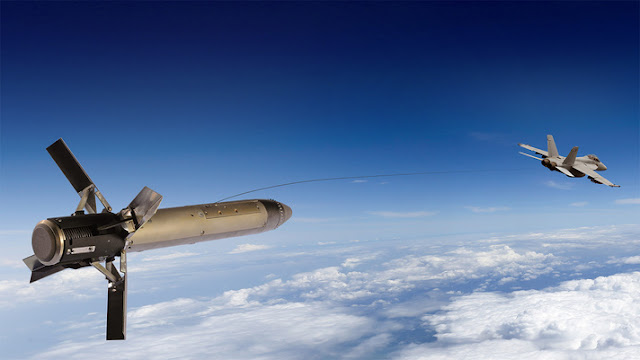 |
| The F-35's T-1687/ALE-70(V) fiber-optic towed decoy works similarly to the F/A-18's AN/ALE-55 shown above. Source : BAE Systems |
Sensor Fusion
The F-35's advanced sensor fusion allow pilots to harness information received from all their onboard sensors to create a single integrated picture of the battlefield. Such information is then automatically shared with other pilots and command and control operating centers on their network via a secure datalink such as the Multifunction Advanced Data Link ( MADL ).
Helmet Mounted Display System
The F-35's Gen III Helmet Mounted Display System ( HMDS ) is an interface that provides pilots with intuitive access to vast quantities of flight, tactical and sensor information for advanced situational awareness, safety and precision. All the information that the pilots need to complete their mission is projected onto the helmet visor rather than on a traditional Heads-up Display. It reduces the pilot's workload and increases responsiveness. In addition, real-time imagery from the DAS's six IR cameras streamed to the helmet allows the pilot to virtually look through the airframe providing the equivalent of x-ray vision. The HMDS enables pilots to target weapons by looking at and designating targets. It does so by tracking the position of the helmet to determine the gaze of the pilot and supplies information such as target identity and distance. This off-boresight targeting capability is especially useful when used in combination with modern all-aspect air-to-air missiles like the AIM-9X. The helmet also offers visor-projected night vision and eliminates the separate use of night vision goggles.
All these functionality comes at a price though. The F-35's super helmet costs a whopping $400000 and has to be custom made for each aviator to ensure a precise fit for the tracking system to work accurately. Rockwell Collins, the maker of the helmet, estimated that every F-35 on order will need 2.5 to 3 helmets over their service life due to wear and tear, damage and pilot attrition and replacement.
| F-35 Helmet. Source : USAF |
Auto Ground Collision Avoidance System
Work done on the F-16's auto ground collision avoidance system ( AGCAS ) has enabled fielding of this revolutionary flight safety system on the F-35 seven years earlier than originally scheduled. The AGCAS integration could have began as early as 2019 and has been estimated to prevent more than 26 ground collisions over the service life of the F-35.
Autonomic Logistic Information System
The Autonomic Logistic Information System ( ALIS ) of the F-35's fleet managing system is the web enabled IT infrastructure that was meant to support cost effective sustainment throughout the life time of the aircraft. It however did not live up to expectations and has been blamed for, among other things, the F-35's poor mission capability rates in the past. It will be replaced by a new system known as Operational Data Integrated Network ( ODIN ) starting from late 2020 which it is hoped will be more user-friendly, secure and less prone to error. Full implementation will be expected by 2022.
Core Missions
Armed with such a dazzling array of advanced sensors and capabilities, the multi-role F-35 can be tasked to perform the following missions :
Air superiority - offensive and defensive counterair
Strategic attack / Air Interdiction against high value strategic and mobile targets
Close air support
Suppression / destruction of enemy air defense
Electronic Warfare
Intelligence, surveillance and reconnaissance
Extended surface warfare - maritime strike ( with future F-35 Block 4 upgrades )
 |
| F-35 releasing JSM from its internal weapon bay during maritime interdiction. Illustration : Kongsberg |
Singapore's Cautious Buy
The F-35 has come a long way since the commencement of the JSF program in 2001. All three variants have achieved initial operational capability ( IOC ), with the F-35B of the Marine Corps first to do so in 2015 with Block 2B software which allows for initial warfighting capability. It was followed by the USAF's declaration of IOC for the F-35A in 2016 with the Block 3i software and lastly the USN for the F-35C with the Block 3F full warfighting capability software by Feb 2019. The long drawn system development and demonstration ( SDD ) phase has concluded in April 2018 and a new phase known as Initial Operational Test And Evaluation ( IOT&E ) has began. The successful conclusion of the IOT&E, initially due in Jul 2019 but currently delayed by problems relating to the Joint Simulation Environment facility, will pave the way for the commencement of full rate production ( FRP ).
Production numbers are peaking with a record number of 134 F-35s delivered in 2019 and that figure is expected to be surpassed in 2020. The combined all variants production numbers have reach 491 aircrafts by December 2019. The unit cost of all variants have continued to fall for the past few years and the latest LRIP Lot 14 F-35B for delivery in 2022 has a unit cost of S101.3 million, significantly lower than the LRIP Lot 11's $115.5 million or the LRIP Lot 10's $122.4 million. With the latest LRIP Lot 12 to Lot 14 F-35A CTOL variant Lockheed Martin even managed to lower the unit cost to their promised less than $80 million target, a year ahead of schedule.
Yet the F-35 has still not ironed out all its teething problems, though it probably will in time to come. Also, although unit prices have steadily fallen, operating costs have not. At between $34000 to $36000 per hour, the F-35 cost significantly more to operate compared with the legacy aircrafts it was meant to replace, like the F-16 ( $24000 per hour ) or F/A-18 ( $24400 per hour ). The fatal crash of a F-35A of the Japan Air Self Defense Force in April 2019 would have added uncertainties to its air worthiness and safety record but it was eventually attributed to spatial disorientation of the pilot. The event nonetheless delayed Singapore's decision making process to buy the F-35. It is therefore not surprising that the Singapore government only committed itself to an initial four aircraft purchase, with an option for eight more. It is not even enough to form half a squadron, and as declared the initial four aircrafts will be used for tests and evaluation. It will be crucial to find out, among other things, if the Pratt & Whitney F135 engine can actually produce enough vertical thrust in the typically hot and humid environment of Singapore to allow for hovering and vertical landing of a laden F-35B.
STOVL Above Stealth
Singapore's selection of the F-35B demonstrates that above all, it values the STOVL capability and the basing flexibility and operational flexibility it brings. If stealth and sensor fusion were its main focus, it would have chosen the F-35A CTOL variant like most other non-US operators of the F-35. It is even willing to trade physical attributes like range, payload and agility for the inclusion of STOVL, which in retrospect makes a lot of sense. The greatest strength of the F-35 is not about its absolute speed, rate of climb, range on internal fuel, sustained turn rate, maximum payload or maximum g-rating. Many legacy 4th generation fighters do better on those parameters. The real value of the F-35 is its survivability in an access denied high threat environment and its superior networking capability thanks to its VLO technology, all-encompassing sensors, organic self-protection mechanisms and connectivity. The planned closure of the Paya Lebar Air Base after 2030 will have the Republic of Singapore Air Force operating out of its three other remaining air bases, Sembawang, Tengah and Changi. That makes the adoption of STOVL capabilities very sensible as it can mitigate some of the risks of air operations disruption from airfield denial attacks.
In the United States, the F-35B has not only changed the way which the Marine Corps' Amphibious Ready Groups conduct their missions, it has given them new blue-water capabilities in the absence of a carrier nearby. The LHAs and LHDs have suddenly turned into mini-carriers in their own right and find themselves taking on missions normally assigned to carrier strike groups. These are mind boggling stuff that was just impossible a few years ago.
 |
| Mini carrier : USS America ( LHA-6 ) staged with 13 F-35B of the VMFA-122 in the eastern Pacific 8th Oct 2019. Photo : USN |
What Happens Next
The Department of State has in principle given the green light for Singapore to acquire up to 12 F-35B fighters but Congress must still approve the deal. Congress was formally notified of the proposed sale on 9th Jan 2020 and has 30 days to review it before it is approved. Given the good bilateral relations between Singapore and the US and the fact that Singapore is a strategic friend and a major security cooperation partner of the US in the Asia Pacific region, the Congressional Note, a necessary FMS formality, will likely be approved without issues. With Congressional approval, final terms will be negotiated for the Letter of Offer and Acceptance.
Singapore may have deliberately timed its F-35 purchase to coincide with the end of LRIP and the beginning of full-rate production. Since current LRIP Lot 12 to Lot 14 for delivery between 2020 and 2022 are likely to have been fully allocated, the assembly of Singapore's initial four F-35B could be assigned to later production lots like LRIP Lot 15 / FRP. Whichever production lot they come from, Singapore is likely to receive the F-35B Block 4 with the latest software upgrades and enhanced warfighting capaibities.
All four initial F-35B are likely to end up at Marine Corps Air Station Beaufort in South Carolina where all international F-35B pilots and maintainers are trained. They will form a training detachment where the first batches of RSAF pilots and ground personnel will undergo training with their USMC counterparts from the Marine Fighter Attack Training Squadron 501 ( VMFAT-501 ) and other foreign entities from the UK, Italy and Japan.
Only when sufficient numbers of F-35Bs have been procured, such as when the addition option of eight F-35B have been exercised and sufficient pilots and maintainers trained will some of these new generation fighters be brought back to Singapore for integration with the rest of the Air Force. What follows will be the achievement of IOC and FOC.
The RSAF already has some of the assets and capabilities that will be essential for supporting 5th generation fighter operations, such as the Leonardo M-346 lead-in fighter trainer for pilot training prior to F-35 operational conversion and the Airbus A-330 Multi-Role Tanker Transport ( MRTT ) for aerial refueling during deployments. It is worthwhile to note that the F-35B ultilises the probe-and-drogue method for aerial refueling similar to all other USN and USMC fixed wing aircrafts, instead of the flying boom method common to USAF tactical fighters, including the F-35A. So apart from the MRTT, perhaps the refueling capabilities of the RSAF's ageing KC-130B and KC-130H might again be put to good use, provided they are still in service in the 2030s!
 |
| F-35B of VMFA-121 refuels from a KC-130J over the East China Sea Oct 2018. Photo : USN |
 |
| F-35B refueling from KC-130J near MCAS Beaufort 18th Mar 2015. Photo LMC |
Sending A Message To China?
Hardly. The news media had it all wrong. While nobody apart from totalitarian and despotic regimes loves China, it does not mean that Singapore's F-35 buy is directed at China, or any other country for that matter, as the Ministry of Defence has claimed. This is especially true as Singapore does not have any territorial disputes with China and China is also one of Singapore's largest trading partners. But it does have a vested interest in ensuring its sea lines of communication remains secure and open so that trade flows are not disrupted.
The notion that Singapore can work together with the other F-35 operating countries in the Asia Pacific, namely Australia, Japan and South Korea, to contain China is also without merit. Why would Singapore want to get involved with the squabbles between China and each of these countries? Has it not had enough of its own problems?
Therefore this F-35 acquisition is just another routine force renewal exercise aimed at replacing the ageing F-16 fighters which have been in service with the RSAF since 1998. Nobody should really read too much into it or worry about it .... at least until the Joint Multi-Mission Ship is constructed.
 |
| F-35B performs ramp-assisted take-off onboard HMS QEII in Nov 2018. Photo : USN |






